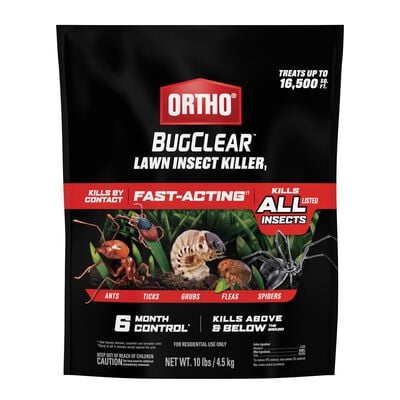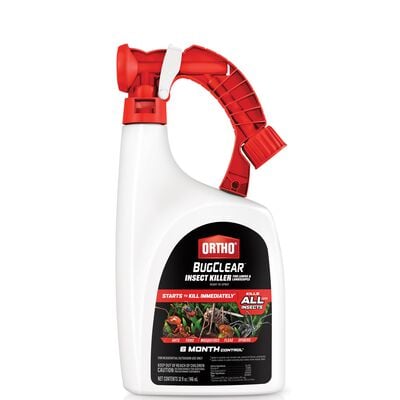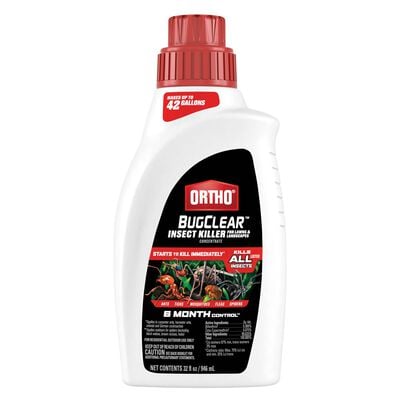
CONTROL TICKS: IDENTIFY AND KILL TICKS IN YOUR YARD
These tiny bloodsuckers can carry pathogens that transmit disease. Here’s how to keep them away.
There are hundreds of tick species worldwide, but only a small percentage of them make their home in the United States. Of these, four are most common: the deer tick (black-legged tick), American dog tick, brown dog tick, and lone star tick.
Why Some Ticks Are Dangerous
Some ticks can transmit pathogens that can lead to different types of diseases. Some of the most common diseases include:
- Lyme disease
- Tularemia
- Rocky Mountain spotted fever
- Ehrlichiosis
Not all ticks carry or are infected with a disease-causing pathogen. Sometimes the most problematic element of a tick bite is the swelling and pain it can cause at the bite site. A bite can also lead to a rash, blisters, and possibly a burning sensation. Bites that lead to infection could cause a person to have difficulty breathing as well as nausea, fever, chills, headaches, chills, and swollen lymph nodes.
Types of Ticks
Ticks have three life stages: larval, nymph, and adult. Each of these stages requires a blood meal. In some cases, a tick might take up to three days to complete its meal before it will detach from its host. Ticks are most often found near wooded or brush-filled areas. They can also be found in areas with lots of weeds or tall grasses, like meadows. Here's how to identify some of the most common types of ticks.
Deer tick
The deer tick is also known as the black-legged tick. This is the culprit that is associated with the transmission of pathogens that cause Lyme disease but can also spread babesiosis and anaplasmosis. The deer tick is found most commonly in deciduous forests through the Northeast, Southeast, and upper Midwest. There is also a western black-legged tick found along the Pacific coast. Deer ticks are primarily moved around by whitetail deer and tend to search for their hosts when temperatures are above freezing.

American dog tick
The American dog tick, also known as a wood tick, is found predominantly east of the Rocky Mountains. These ticks can transmit pathogens that cause tularemia, ehrlichiosis, and Rocky Mountain spotted fever. They are most commonly found in grassy areas with little to no tree cover. Reddish-brown in color, the American dog tick is a well-known bane of dogs and can cause canine tick paralysis.

Brown dog tick
The brown dog tick is also sometimes called a wood tick. It is found worldwide and throughout the U.S. These ticks are known primarily for spreading Rocky Mountain spotted fever, but can also transmit pathogens that cause babesiosis and ehrlichiosis. As the name suggests, this tick is most commonly found on dogs. Unlike the American dog tick, the brown dog tick is able to complete its entire life cycle indoors and is usually the culprit when tick infestations occur inside your home.

Lone star tick
The lone star tick is primarily found in the eastern and southeastern United States. These are aggressive ticks, and the female has a prominent white dot (or lone star) on her back. Lone star ticks are commonly found in woodlands and other spots with dense undergrowth, particularly in areas where animals such as whitetail deer like to bed down. Their bites can be very irritating to people. They can transmit pathogens that lead to diseases like STARI (Southern Tick-Associated Rash Illness), ehrlichiosis, Heartland virus, and tularemia.

Kill and Control Ticks
There are several things you can do to help guard against ticks.
Keep deer away. If you live in a rural area or your property is frequently visited by deer, you should consider using deer repellents or installing a fence to keep them off your property.
Protect yourself. When working outside or going for a hike, take precautions by wearing clothing that covers your arms and legs, and use proper repellents.
- Wear a long-sleeved, light-colored shirt.
- Wear long pants tucked into your socks.
- Use an EPA-approved personal repellent designed specifically for humans.
Protect your pets. Ask your veterinarian about effective, pet-friendly tick-control treatments, and check your pets thoroughly for ticks after they've been outside.
Keep your yard tidy. Help prevent ticks from taking up residence in your lawn and landscape by keeping it well-maintained.
- Remove leaf and brush piles.
- Cut back tall grasses and weeds.
- Keep woodpiles stacked and dry.
- If you live next to a wooded area, create a 3-foot wide barrier between the tree line and your yard – mulch or gravel will work well.
Protect your yard. You can help keep ticks from taking up residence in your lawn, gardens and landscapes by cutting back tall grasses and weeds and treating with Ortho® Bugclear™ Insect Killer For Lawns & Landscapes Concentrate. Applied with a tank sprayer or the Ortho® Dial N' Spray® Hose End Sprayer, it kills within minutes and gives you 6 months of control against ticks. Another option is to treat your lawn with Ortho® BugClear™ Lawn Insect Killer₁. The granules kill ticks by contact and will provide 3 months of protection.
Create a tick barrier around your home. Add an extra layer of defense against ticks by treating doors, windows, and other entry points with Ortho® Home Defense Insect Killer For Indoor & Perimeter2 With Comfort Wand®. On non-porous indoor surfaces, it will protect against ticks and other common household pests for 12 months. Be sure to follow all label instructions.
If you do get bit by a tick and experience symptoms that include a bulls-eye rash, headache, fever, fatigue, or joint pain and stiffness, visit your healthcare provider immediately for evaluation and treatment.


